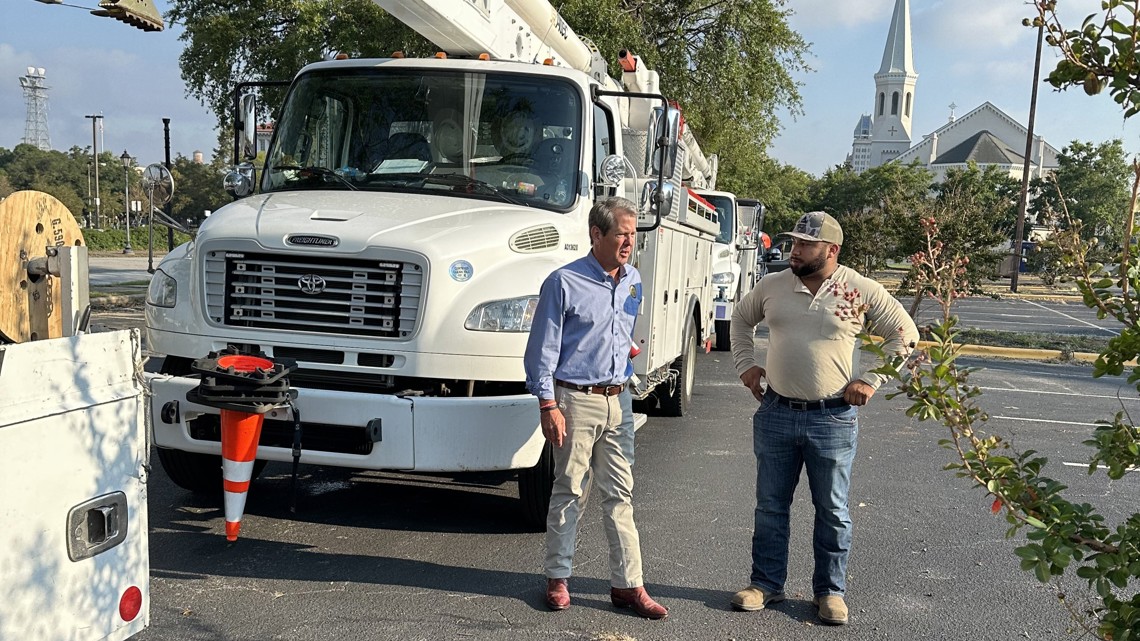RICHMOND COUNTY, Ga. — The scope of damage left behind Hurricane Helene is still being uncovered -- virtually no part of the state of Georgia was left untouched.
Just days after traveling to hard-hit Valdosta in south Georgia, where Helene pushed into the state still as a strong hurricane, Gov. Brian Kemp traveled to the eastern stretch of the state, another area still coming to terms with the devastation left behind.
On Monday, Sept. 30, Kemp and the first lady toured the damage in Richmond County and the surrounding area and met with those heavily impacted by Helene. Following their tour, the pair were joined by state, federal and local leaders and emergency management officials for a press briefing in Richmond County to provide updates on the state's ongoing storm response.
Kemps was joined by Georgia Emergency Management Agency Director Chris Stallings, Gen. Dwayne Wilson of the Georgia National Guard, statewide, federal and local elected leaders, and emergency management officials.
Ahead of Kemp's tour, he posted on X that he had requested an official expedited emergency disaster declaration from FEMA to allow Georgia to access all the necessary recovery resources.
The Georgia Supreme Court will also issue a statewide judicial emergency for 30 days for those unable to fulfill the timeline due to the storm.


Kemp provided updates regarding power restoration and the clearing of roads, noting that, according to Georgia Power, around 5,000 powerline polls remain damaged and that most state routes should now be accessible with at least one lane open.


Kemp also touched on traffic signals, encouraging all Georgia residents to treat down traffic lights like four-way stop signs and adding that there have already been accidents in areas where those lights are out.
The governor spent Saturday in Valdosta where he described Helene's impact on Georgia: "It literally look at look like a 250-mile tornado hit and it was a hurricane."
Kemp addressed cleanup efforts and the extreme damage to the state's agriculture industry -- from poultry to dairy to timber and tree nuts -- which predictions say will be worse than 2018's Hurricane Michael.
"Literally every commodity in this state has been damaged by this storm," Kemp said.
Massive Hurricane Helene crashed into Florida’s sparsely populated Big Bend region as a category 4 storm, bringing storm surge and high winds across the state’s Gulf Coast communities before ripping into southern Georgia.
The storm remained at hurricane strength as it crossed into southern Georgia before weakening into a tropical storm as it approached Atlanta early Friday. It left a wide swath of rising water, known as storm surge, across Florida's Gulf Coast. First responders rescued stranded people from Tampa and St. Petersburg to Cedar Key and Perry, close to where Helene made landfall late Thursday.
The damage extended hundreds of miles to the north, with flooding as far away as North Carolina. Firefighters, infants and older adults were among those killed. According to an Associated Press tally Friday, at least 64 deaths occurred across the southeast in Florida, Georgia, North Carolina, South Carolina and Virginia.
Material from the Associated Press contributed to this report.

